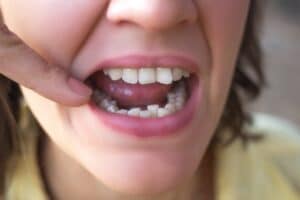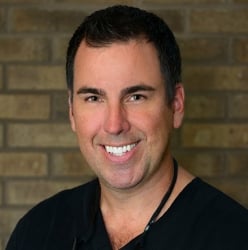Having an attractive smile requires more than just the right shade of white. It also depends on how well the teeth are aligned. In contrast, having teeth that appear crowded can do more than diminish a person’s appearance. Crowded teeth can cause several health problems. People not born with perfectly straight teeth have many treatment options to correct these alignment issues.
What Does It Mean to Have Crowded Teeth?

Patients with crowded teeth, also known as malocclusion, suffer from misalignment, which can occur as an overbite, underbite, or overlapping of teeth. Crowding of teeth can be mild, such as when an anterior (front) tooth is rotated slightly. Moderate cases occur when two or three anterior teeth overlap. The most severe types of crowding happen when most of the teeth in the top or bottom row overlay one another.
What Causes Crowded Teeth?
Many causes exist for crowded teeth, one of the most common being genetics. For example, smaller jaws run in some families, which can leave little room for permanent teeth to grow. Congenital disabilities like a cleft palate can also contribute to overcrowding.
Malocclusion can result from dental abnormalities like having extra, lost, or impacted teeth. Also, jaw problems like tumors, dislocations, or fractures can lead to crowding, as can dental procedure errors, such as improperly placing a crown or filling.
Crowding of teeth can stem from issues during childhood, such as thumb sucking, too much pacifier use, or tongue thrusting. Also, losing a baby or primary tooth too soon can allow other teeth to move into the space, making it more difficult for permanent teeth to emerge properly. Conversely, baby teeth that loosen but remain for too long can also cause overcrowding.
The Risks of Having Crowded Teeth
Malocclusion usually poses more than just aesthetic challenges. Crowded teeth can alter a person’s facial profile. They can also make biting or chewing food and closed-mouth breathing difficult. Some people with misaligned teeth develop speech problems like a lisp, or they can accidentally bite their lips, tongue, or cheek.
Crowding of teeth can interfere with dental hygiene and health. Misaligned teeth are harder to brush and floss. People with moderate to severe cases tend to develop more cavities, tooth decay, gum disease, and other problems. When oral health diminishes over time, other conditions like heart disease and immunity deficiencies can develop.
How to Fix Crowded Teeth
Most people not blessed with a perfect bite have options for treating mild, moderate, or severe teeth crowding. A dentist can suggest the best course of action, given the patient’s health history and severity of their malocclusion.
Retainers
Retainers can be effective in treating very mild cases of crowded teeth. Retainers cannot straighten teeth but can apply enough pressure to move them more into alignment.
Braces
Braces are the most common treatment for crowded teeth in children, but adults also opt for them. Traditional braces, which are typically affordable, involve gold or silver brackets glued to the teeth to correct mild and severe crowding, jaw problems, and other issues. The dentist also attaches small rubber bands that link between the brackets. Patients can also choose ceramic braces consisting of enamel-colored brackets instead of metal.
Clear Aligners

Clear aligners like Invisalign are invisible orthodontics or clear braces that function like retainers. Instead of having brackets glued to the teeth, patients wear removable clear braces that they should wear at least 22 hours per day. In-office treatments like Invisalign are about as affordable as traditional braces but require regular maintenance.
A common concern with patients is knowing how long aligners like Invisalign take for crowded teeth. Most patients need 24 sets of trays, each including one for the top and bottom teeth, and they need to wear each set for two or three weeks before progressing to the next set. The entire treatment lasts 48-72 weeks.
Veneers, Crowns, Implants, & Bridges
For patients with moderate teeth crowding, a dentist might recommend dental veneers, thin, tooth-colored shells customized to fit over the top of original teeth. Before attaching the veneers, the dentist has to remove some of the original enamel. Although veneers require fewer dental appointments, they are typically more expensive than traditional and clear braces.
For some patients that have a lot of fillings or decay in their crooked teeth, a dental crown is more appropriate than a veneer to straighten teeth. If one or more teeth are missing in a crowded mouth, dental implants or bridges may also be used to replace missing teeth in the process of straightening a smile.
Regardless of the treatment you choose, fixing crowded teeth safely and effectively requires in-office dental care. Over-the-counter or at-home treatments that promise results are generally ineffective and could cause additional dental problems. Individuals concerned about their crowded teeth should consult a dentist to understand the severity of their condition and learn about the best treatment options.
- Dental Implant Pros and Cons - August 26, 2023
- Receding Gums Stages - August 12, 2023
- When Is It Too Late for Gum Grafting? - July 8, 2023


